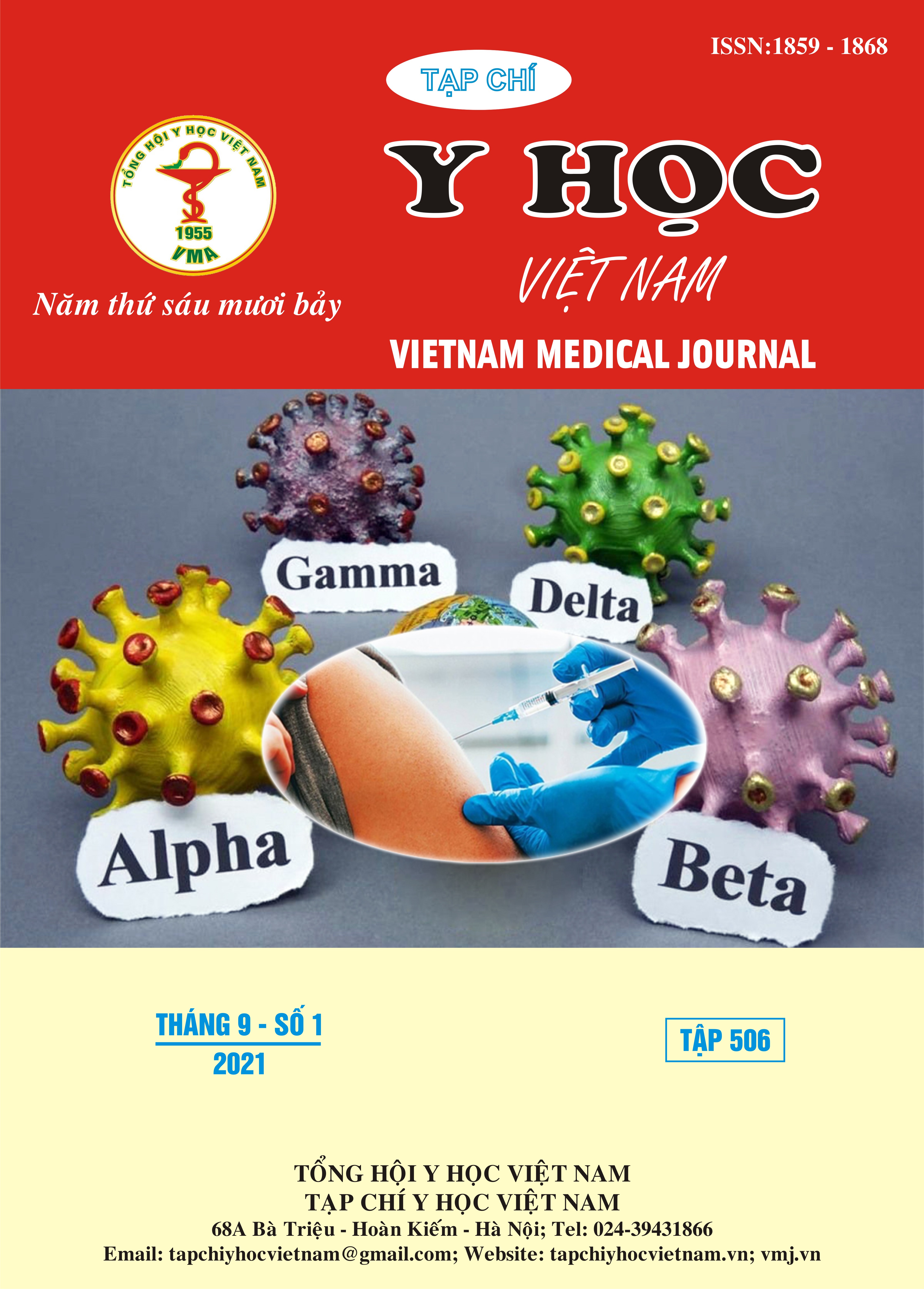RELATIONSHIP BETWEEN KRAS, NRAS, BRAF MUTATIONSAND CLINICOPATHOLOGICAL CHARACTERISTICS IN METASTASIS COLORECTAL CANCER
Main Article Content
Abstract
Objective: (1)To determine the rate of KRAS, NRAS and BRAF gene mutations in metastatic colorectal cancer; (2) To explore the possible relationship between their mutation status with some clinicopathological characteristics. Patients and methods: A cross-sectional study included 76 cases of metastasis colorectal cancer were diagnosed and treated at 108 Military Central Hospital. KRAS, NRAS and BRAF mutations were identified by direct DNA sequencing. Results: Among the 76 metastasis colorectal cancer patients, we detected 34 (44,7%) mutations in the KRAS gene, 3 (3,2%) mutations in the NRAS gene, and 7 (9,2%) mutations in the BRAF gene. The KRAS mutation frequency was significantly higher in the patients who had initial CEA level > 5ng/ml (p = 0,022). The BRAF mutation frequency was significantly higher in the patients who had initial CEA level > 20ng/ml (p = 0,007). Other clinicopathological features, such as age, gender, personal status,primary tumor location, histological grade, number of metastatic sites showed no positive relationship with KRAS and BRAF gene mutation status. There was not the positive relationship between gender, primary tumor location, CEA level, histological grade and status of NRAS mutation in our research. Conclusion: The KRAS, NRAS and BRAFmutation rates of metastasis colorectal cancer in 108 Military Central Hospital was 44,7%; 3,2% and 9,2%, respectively. KRAS mutation was associated with CEA level (> 5ng/ml). BRAF mutation was associated with CEA level (> 20ng/ml).
Article Details
Keywords
KRAS mutation, NRAS mutation, BRAF mutation, colorectal cancer
References
2. E. Van Cutsem, A. Cervantes, B. Nordlinger và cộng sự (2014). Metastatic colorectal cancer: ESMO Clinical Practice Guidelines for diagnosis, treatment and follow-up. Ann Oncol, 25 Suppl 3, iii1-9.
3. A. M. Krasinskas (2011). EGFR Signaling in Colorectal Carcinoma. Pathology Research International, 2011, 932932.
4. J. Gong, M. Cho và M. Fakih (2016). RAS and BRAF in metastatic colorectal cancer management. J Gastrointest Oncol, 7(5), 687-704.
5. W. A. Messersmith (2019). NCCN Guidelines Updates: Management of Metastatic Colorectal Cancer. J Natl Compr Canc Netw, 17(5.5), 599-601.
6. F. Selcukbiricik, A. Bilici, D. Tural và cộng sự (2013). Are high initial CEA and CA 19-9 levels associated with the presence of K-ras mutation in patients with metastatic colorectal cancer? Tumour Biol, 34(4), 2233-2239.
7. B. Á. Tuyết và N. V. Hiếu (2017). Nghiên cứu một số đặc điểm lâm sàng, cận lâm sàng và tình trạng đột biến gen KRAS trong ung thư đại trực tràng tại Bệnh viện K, Luận văn Nghiên cứu sinh ung thư, Trường Đại học Y Hà Nội.
8. V. T. Nhung, N. T. Lợi và H. T. Nhung (2018). Nhận xét tình trạng đột biến gen KRAS, NRAS, BRAF trên bệnh nhân ung thư đại trực tràng tại Bệnh viện Bạch Mai, Khóa luận tốt nghiệp đại học ngành y khoa, Đại học Quốc gia Hà Nội.


